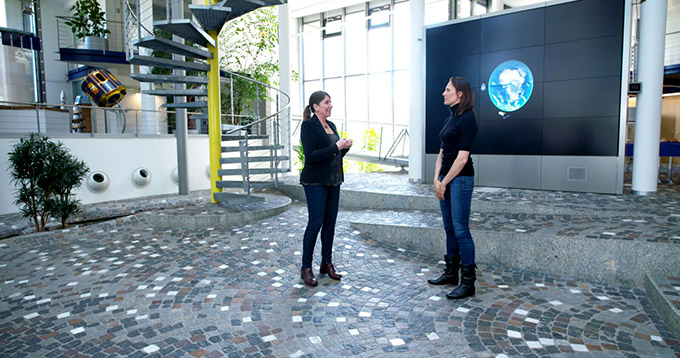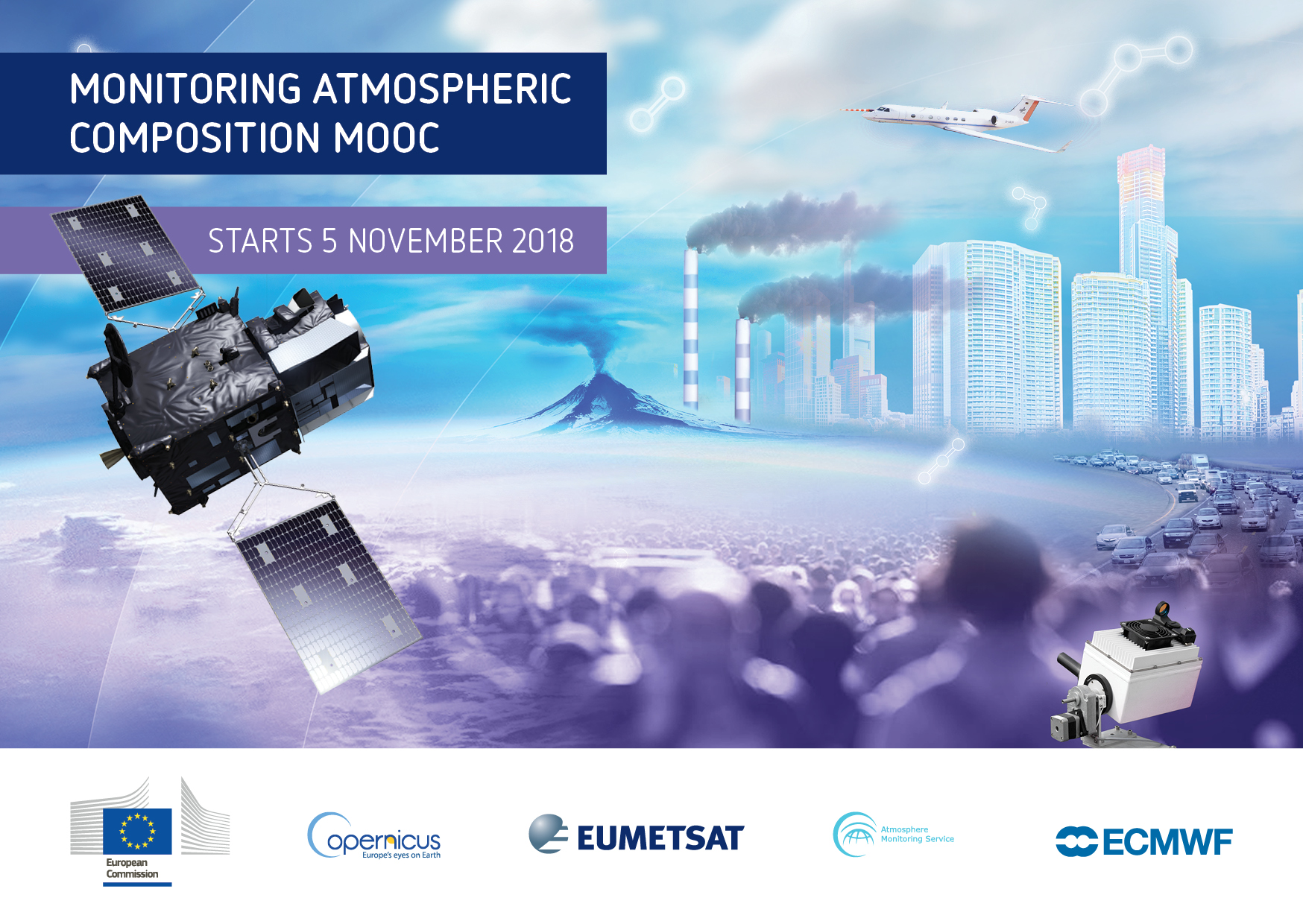
Monitoring Atmospheric Composition MOOC
05 November–07 December 2018, ONLINE @ FUTURELEARN


Find out how we monitor the Earth’s atmosphere and discover the threats it faces by joining a free, massive open online course.
21 October 2020
05 November 2018
Discover how observations are collected of the Earth’s atmosphere, from satellites and closer to Earth, and how these are fed into powerful supercomputers to produce forecasts of the quality of the air around us.
The monitoring atmospheric composition MOOC is a free, five-week online course that will provide an introduction to the latest in space technology and the networks of sensors and instruments that track conditions closer to Earth.
On the course, which starts on 5 November 2018, you will learn how data from the space and ground-based monitoring networks are used by the Copernicus Atmosphere Monitoring Service (CAMS) to model and forecast conditions in the atmosphere.
The course is organised by EUMETSAT and CAMS, which is run by ECMWF , in support of the EU’s Copernicus Programme .
It is brought to you by physicist and broadcaster, Dr Helen Czerski from University College London, and lead educators Dr Rosemary Munro from EUMETSAT and Dr Mark Parrington from the Copernicus Atmosphere Monitoring Service, with additional support from Dr Mark Higgins from EUMETSAT.
A journey through the atmosphere
During the five week run, participants will learn about the role of the Copernicus programme in enabling better monitoring of the composition of the atmosphere, for example to monitor air quality etc.
And you will learn how to access freely available Copernicus data and look at practical examples of how it is used in real-world case-studies and in a range of areas of policy and decision-making.

Course plan
The weekly topics will focus on ‘Earth’s atmosphere and the challenges we face’ (Week 1); ‘pollution, air quality and health’ (Week 2); ‘large-scale changes in ozone and greenhouse gases’ (Week 3); ‘long-range transport of air pollutants’ (Week 4); and ‘policies to maintain our life-support system in the future’ (Week 5).
The course will introduce people to the atmospheric monitoring data from EUMETSAT in the context of the ‘Copernicus’ programme. It will highlight the role of the Sentinel-4 and Sentinel-5 instruments onboard Meteosat Third Generation and Metop Second Generation satellites, Sentinel-3 (aerosol products), Sentinel-5P, and the Copernicus contributing missions already providing atmospheric composition data for Copernicus – such as Metop and Meteosat.
Course participants will also explore the key role of the Copernicus Atmosphere Monitoring Service, focussing on the applications of its data for users and its wider benefits to society.

Other institutions guiding you along in your exploration of the atmosphere include the University of Leicester , King's College London , Météo-France , the French National Center for Scientific Research (CNRS ), the University of Bremen , the Finnish Meteorological Institute and NASA’s Jet Propulsion Laboratory .
